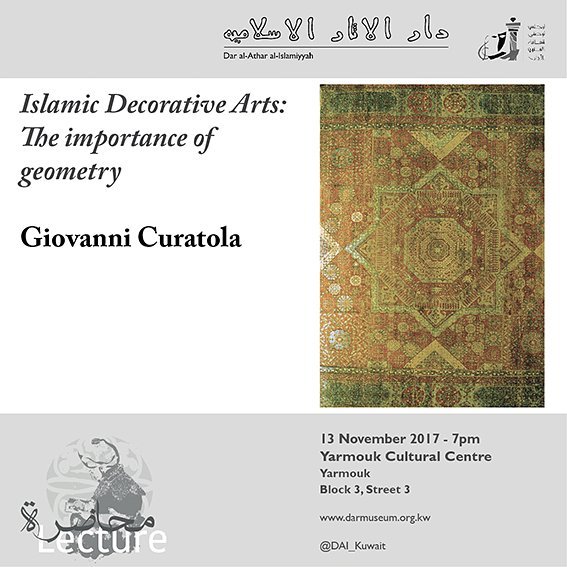Giovanni Curatola
Dr Giovanni Curatola is a professor at the University of Udine, Italy and is the author of more than one hundred scientific publications on Islamic art. He curated the first general exhibition on Islamic Art in Italy in 1993. He also curated the exhibition al-Fann. Art from the Islamic Civilization. The al-Sabah Collection, Kuwait, and, together with the curator Salam Kaoukji, he organised the loan of 250 objects from the collection to the MFAH (Houston, USA).
Islamic Decorative Arts: The importance of geometry.
Islamic decorative arts are mainly based on three recurrent devices: calligraphy, arabesques (abstract floral patterns) and geometry. Geometry in particular seems to have been so much developed throughout all ages and lands touched by Muslim rule. There are many examples in architectural decoration in buildings scattered from Spain to Central Asia. Examples are also found in many artifacts such as pottery, glass, metalwork, textiles, and book bindings. The presentation will analyse this “phenomenon” and try to find a simple explanation for the love of geometrical patterns that Muslim artists cultivated everywhere in their experience.
